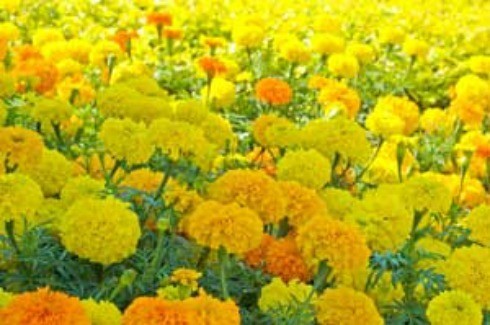

| Botanical Name: |
| Tagetes |
| Life Cycle: |
| annual |
| Planting Time: |
| spring |
| Height: |
| 6" to 36" |
| Exposure: |
| full sun |
| Soil: |
| average, well-drained soil |
| Hardiness: |
| n/a |
| Bloom Time: |
| year-round depending on variety and zone |
| Flower: |
| yellow, gold, orange, maroon and crimson; solid or bi-colored, single or double flowers |
| Foliage: |
| light to dark green |
| Propagation: |
| seeds, self-sowing |
| Suggested Use: |
| beds, borders, mass plantings, edging, containers, planters, paths and walkways |
| Growing Hints: |
| Start with inexpensive nursery transplants or seeds sown directly into the ground in the spring. You can also start seeds indoors 6 to 8 weeks before the last frost date. Pinch off spent blooms for continuous flowering all summer long. |
| Interesting Facts: |
| Marigolds possess natural compounds useful for repelling nematodes in the garden, especially African varieties. Several varieties are also widely used for their culinary and herbal properties (mostly for tea) in many Latin American countries. |
Add your voice! Click below to comment. ThriftyFun is powered by your wisdom!
I cannot forget that Marigolds attract Spider Mites and quickly turn brown and ugly, unless sprayed first. They are excellent for distracting/attracting the mites away from the garden, so
I plant several on the garden perimeter and let them "do their thing", since my garden is organic.
I prefer the French two-tone smaller plants for this purpose and the larger ones more for their short-lived beauty in an organic environment. Blessings.
Add your voice! Click below to comment. ThriftyFun is powered by your wisdom!